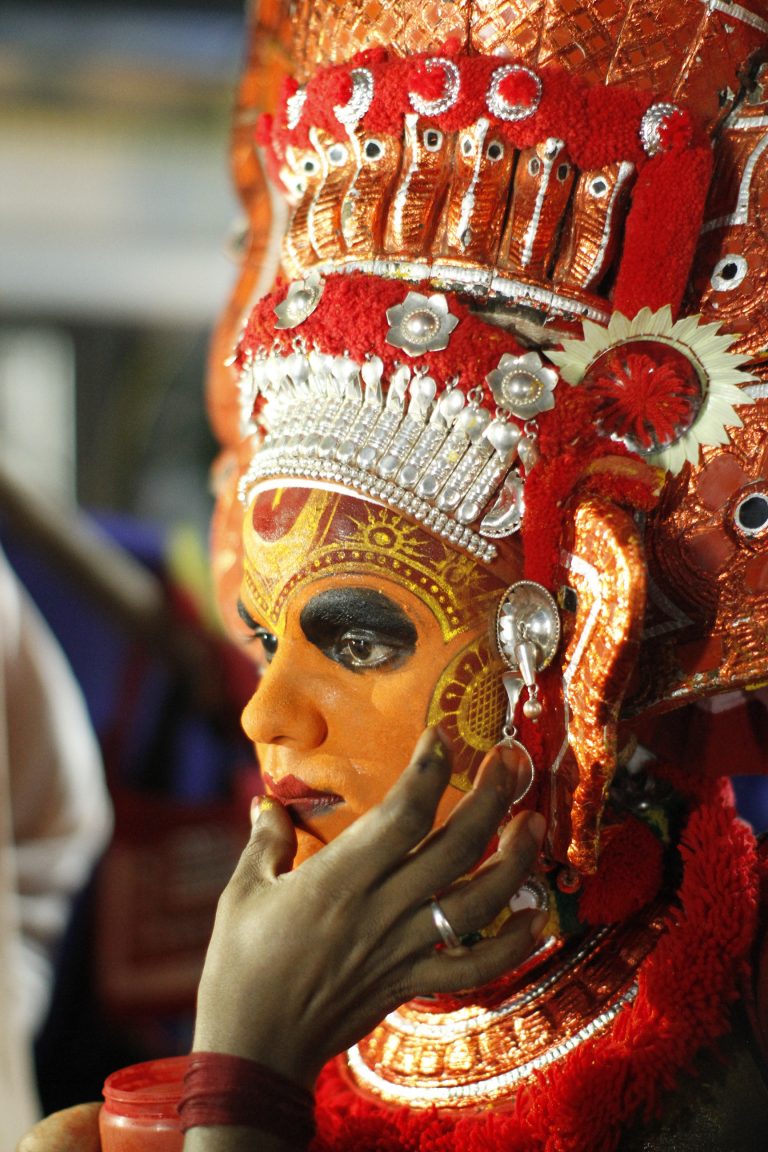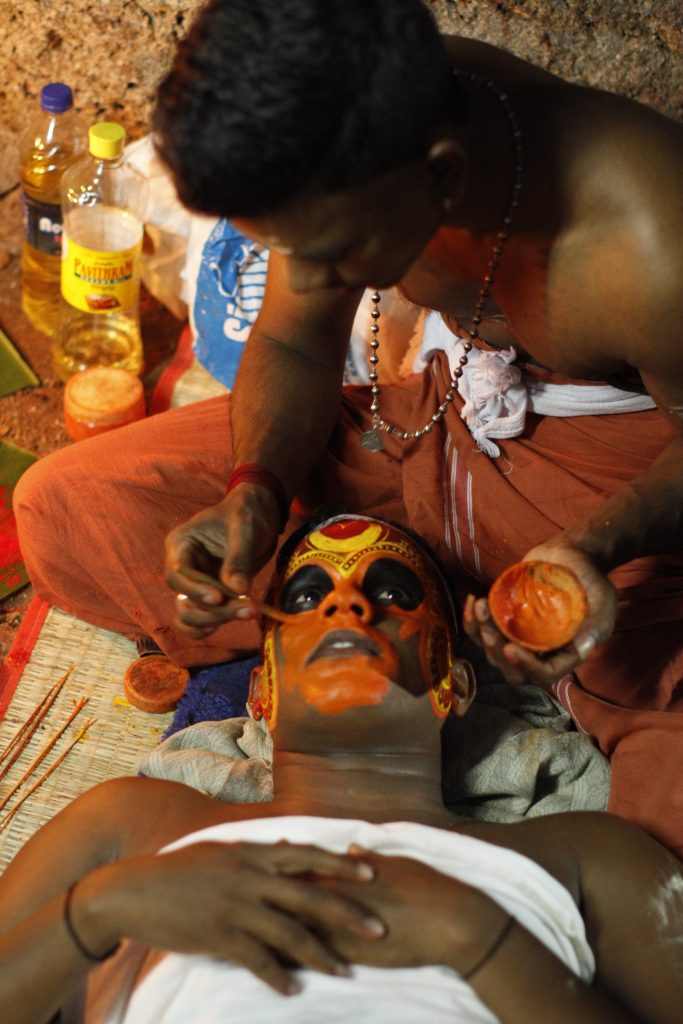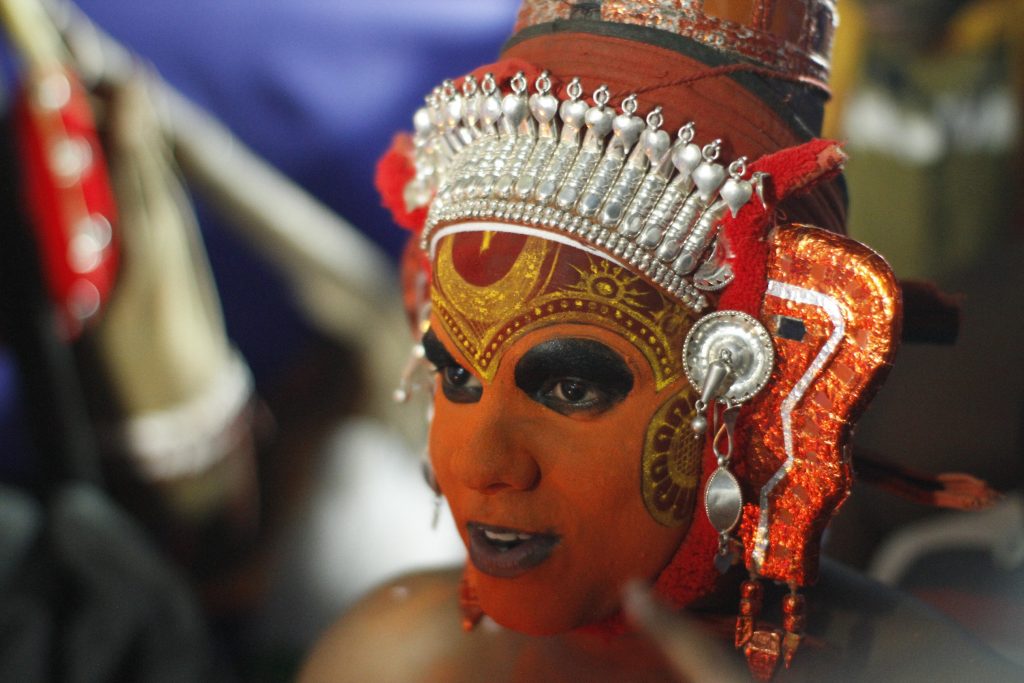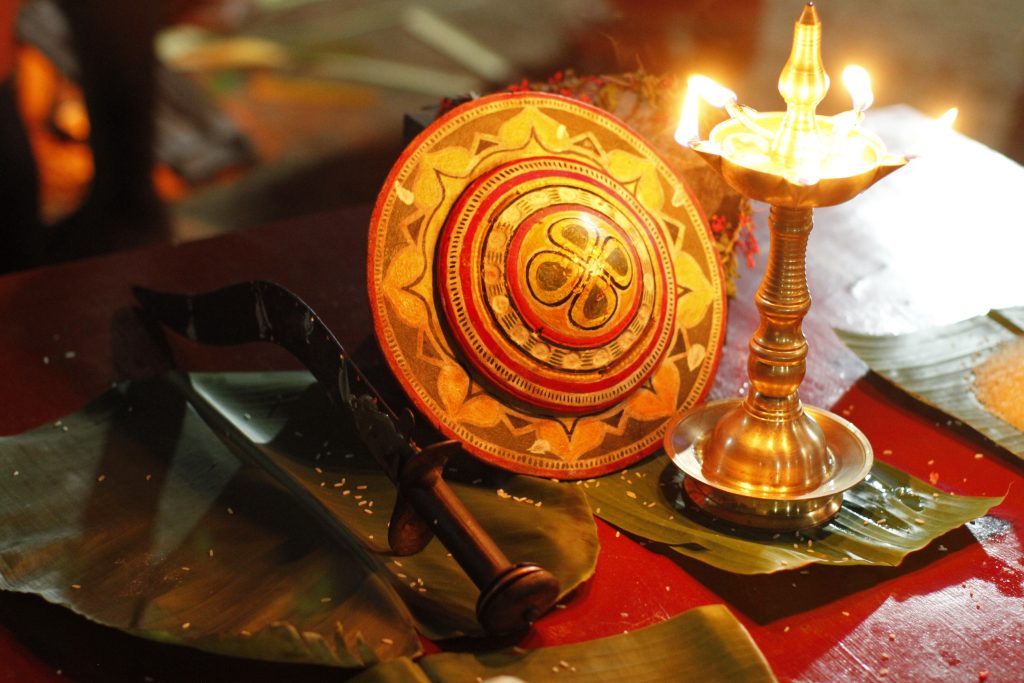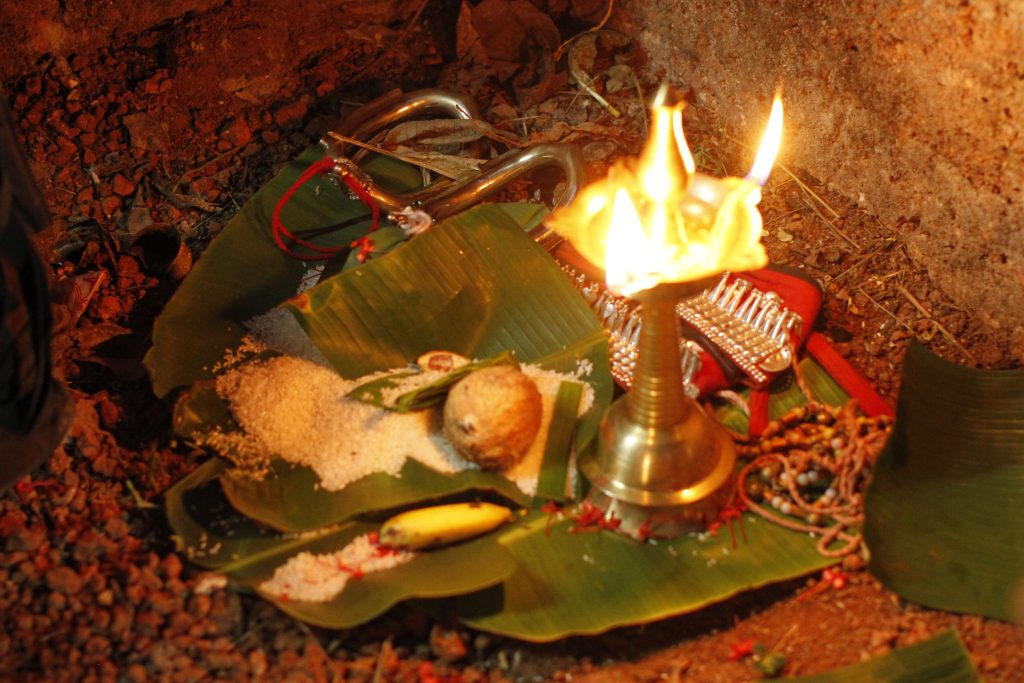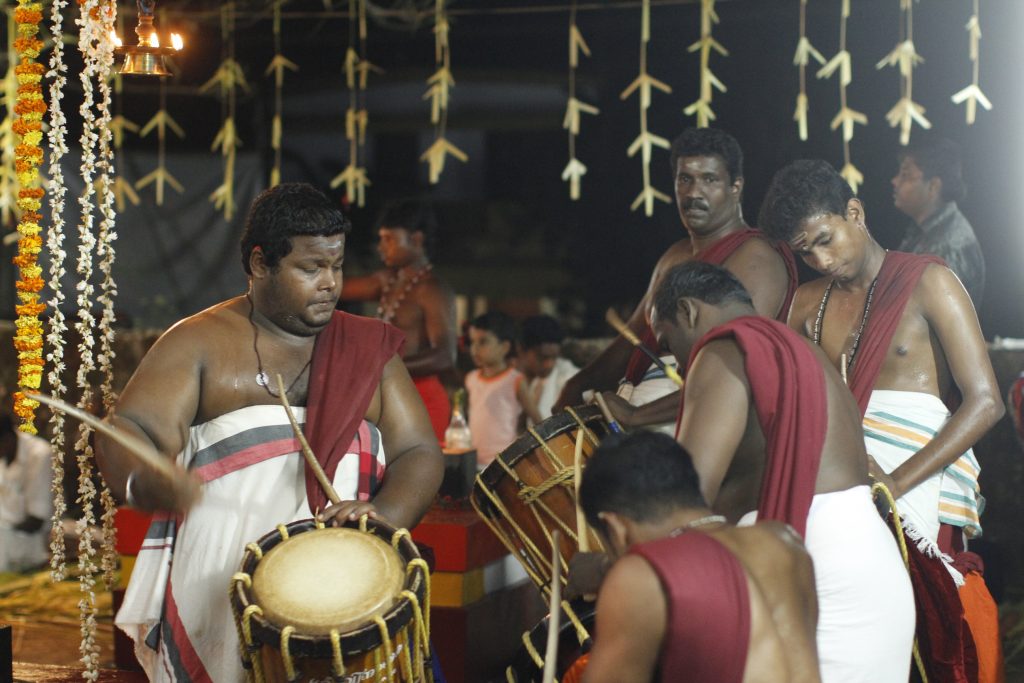India is a vast country having empire of the most ancient civilization. Indian Culture is one of the oldest and unequalled. Here is a unique culture of unity in diversity throughout the country. Every state, every city, every district and every village have its own culture. If we look into deep, then we find that almost every state has carved out its own cultural niche. One of the best example is Kerala.
IIP Foundation, under the project of “Indian Art and Culture Documentation” reached over to ‘Kannur’ district, state of ‘Kerala.’
Kannur district is known as the land of Looms and Lores. It is famous for its pristine beaches, native performing art, handloom industry and obviously one of its best the ‘Theyyam.’
Expression, Worship or Idealization… “Theyyam” is more than these
According to Hinduism , all the creation-preservation-destruction activities in the universe are controlled by the three gods – Shiv, Brahma, Vishnu, respectively. Theyyam is a divine dance and can be considered as a form of worship. The traditional festivals of Kerala bring forward ancient myths that speak of gods, goddesses, saints, heroes and demons who once walked through this incredible land.
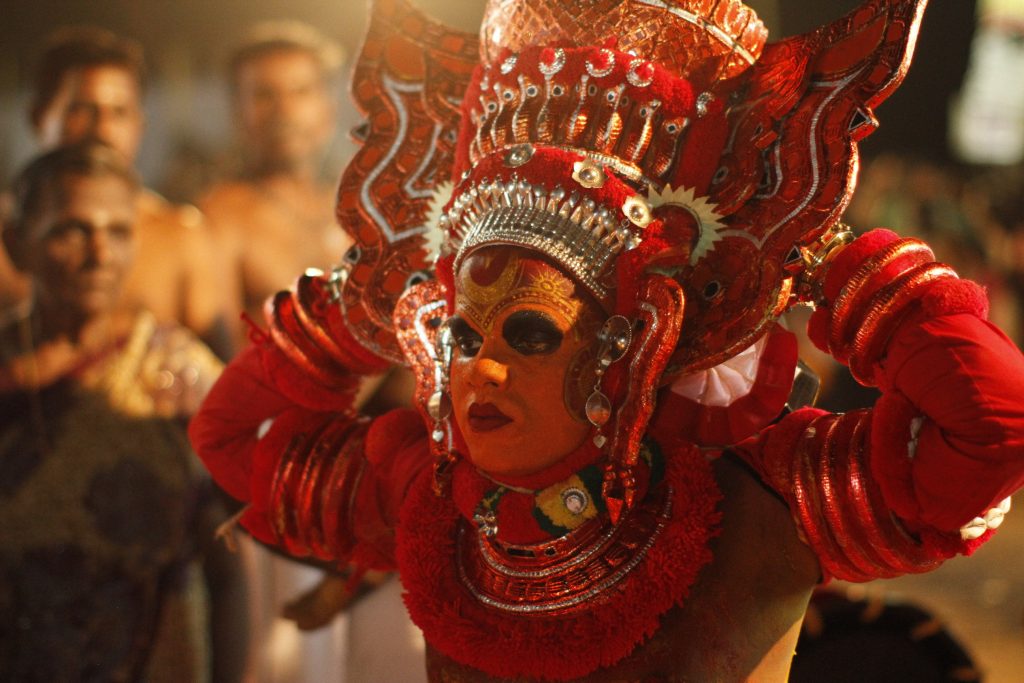
The word Theyyam literally means ‘God‘ and hence the Theyyam dance is known as the ‘Dance of Gods‘. The colorful costumes and exotic make-up are the main highlights of Theyyam. The Theyyam performer is called ‘Kolam’ who represents a divine, mythological, or heroic character.
One of the attractions of Theyyam is its costume and make-up .The facial makeup (Mukhathezhuthu) is so complex that the artist has to lie on the floor for hours while the designs are painted on their faces. Turmeric, rice paste and lime are mixed to make the colors, and the paint is applied with a coconut palm reed as a brush. The most sacred part of the costume is the headgear which is made from tender coconut leaves. The facial makeup and the headgear vary from character to character. The crown (muti) is made from bamboo splices and wooden planks which are covered with color cloths, coconut leaves and flowers. Arm ornaments, breastplates, bangles, garland and other body decorations are also used in Theyyam.
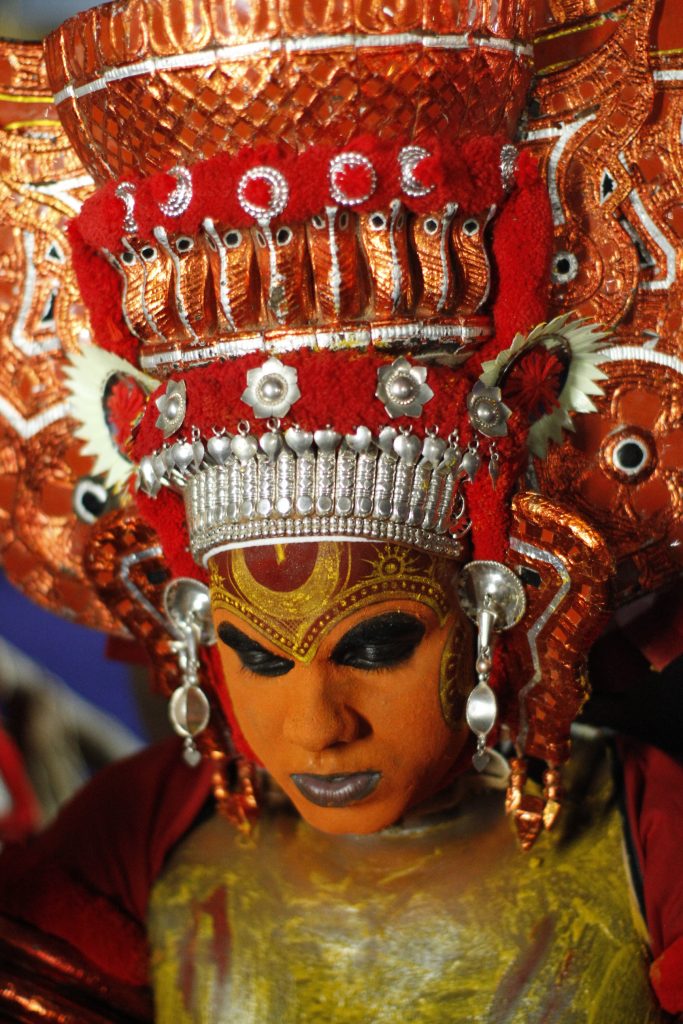
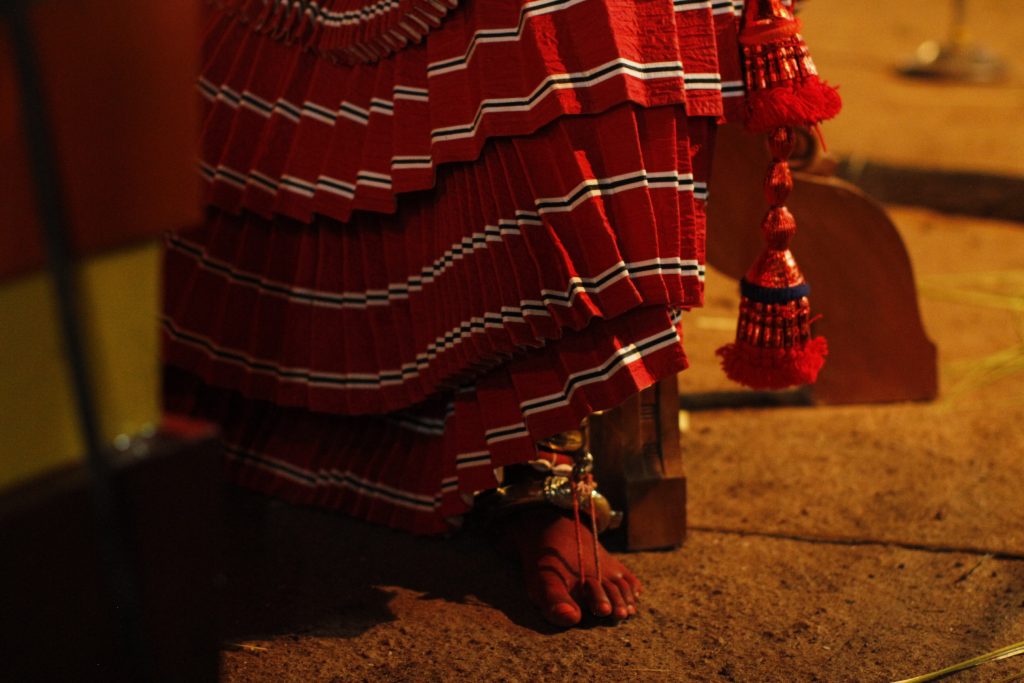
after wearing the headgear ,and this is the moment of becoming the deity, the moment of crossing the line, as he stares into a small hand-held mirror. at this point , he slips into another state of being, his eyes widening as they focus not on his own reflection, but on the enigmatic features of a divine being this is the moment of fusion, the defining moment known as mukhadarshanam,or the seeing of the face.it is the moment when a mortal becomes a god.
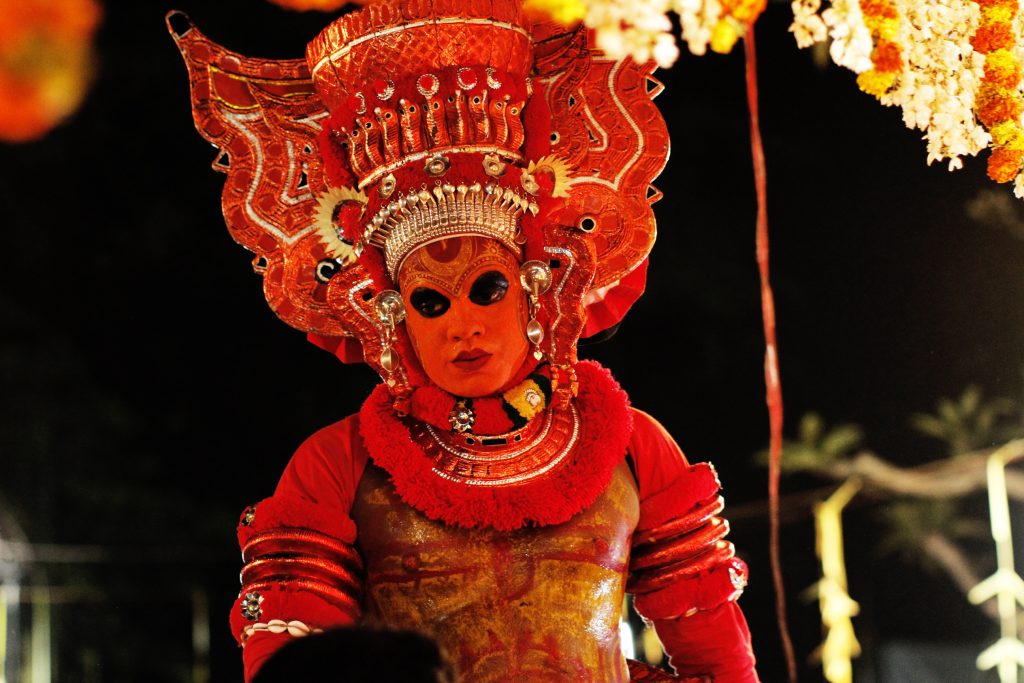
Native musical instruments are used in Theyyatam festivals. The instruments are played in accordance with the steps of the dancer. Drum, Kuzhal, Perumbara, Counch, Cherututi, Utukku and Chermangalam are well known musical instruments used in Theyyatam. The rhythm of the playing of these instruments varies from Theyyam to Theyyam. The continuous playing with measured interludes helps to make the performance very impressive.
“it was a kind of cultural adventure. Existence of Theyyam in Kerala proves that there is still remained the belief and idealization of our Indian culture which is beyond of our digital era.”
Theyyam is an expression of human performance and devotion to God. it describes religious activities and reveals artistic value with belief, determination and passion.
If you visit North Malabar regions like Kannur, Kasaragod, and parts of Wayanad and Kozhikode districts between November and March, more than 600 types of theyyams are performed in more than a thousand temples in a year , you will get a chance to see the most colorful and ritualistic ceremony of Theyyam.


